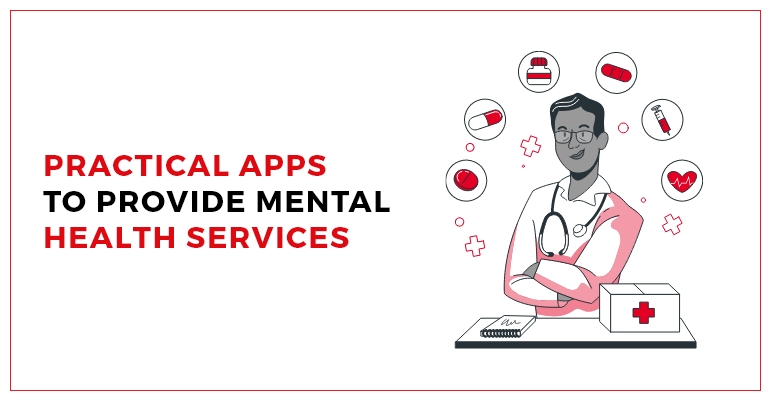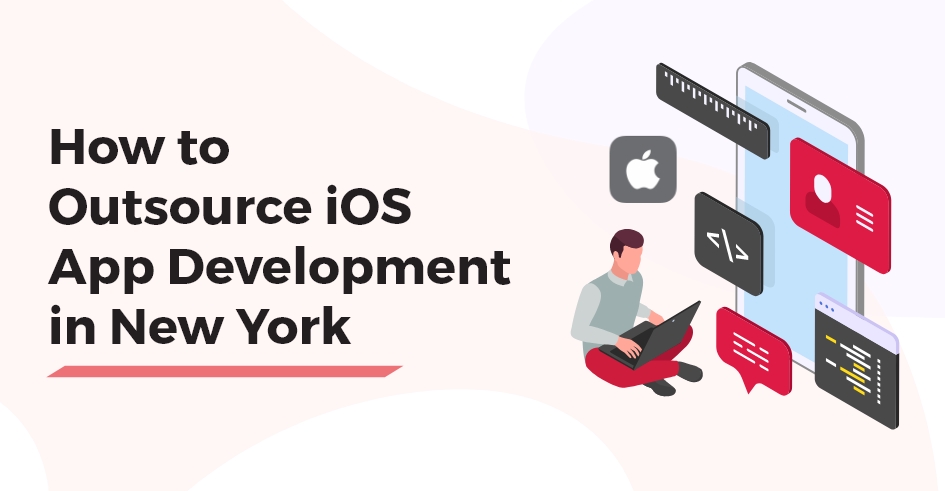Mobile app development platforms are tools and environments that enable developers to create, test, and deploy apps across various devices. In 2024, choosing the right platform is crucial due to the growing demand and complexities in app development.
With so many options available, selecting the right app development platform has become overwhelming. Each business and developer has unique needs, making this choice even more daunting.
The sheer number of App Development Platforms available can be daunting, especially with the Google Play Store and Apple App Store expected to host over 2.87 million and 1.96 million apps in 2024. The right choice could lead to better time, resources, and opportunities.
This blog is your comprehensive guide to the top 10 app development platforms in 2024. I will explore their latest versions, key features, Ideal use cases, pros and cons, and Online courses and tutorials to help you get started. By the end, you’ll have a clear understanding of which platform is right for your needs.
How to Choose App Development Platforms?
When choosing App Development Platforms, consider these key factors:
- Ease of Use: A user-friendly interface with a low learning curve is essential.
- Scalability: Ensure the platform can grow as your app evolves.
- Support for Multiple Platforms: Cross-platform compatibility is a must in today’s market.
- Security Features: Robust security measures are non-negotiable.
- Integration Capabilities: Seamless integration with other tools and services is crucial.
Modern App Development Platforms need to excel in these areas to be viable in 2024. Consider these criteria to find the best app development platforms for your project.
![app development platforms [updated 2024]](https://www.technbrains.com/blog/wp-content/uploads/2024/08/app-development-platforms-updated-2024.png)
Top 10 App Development Platforms in 2024
The best app development platforms in 2024 are:
- Xamarin
- Ionic
- React Native
- Flutter
- NativeScript
- Android Studio
- Sencha Touch
- Xcode
- Appery.io
- Firebase
Let us explore each one of the mobile app development platforms in the next section.
Xamarin
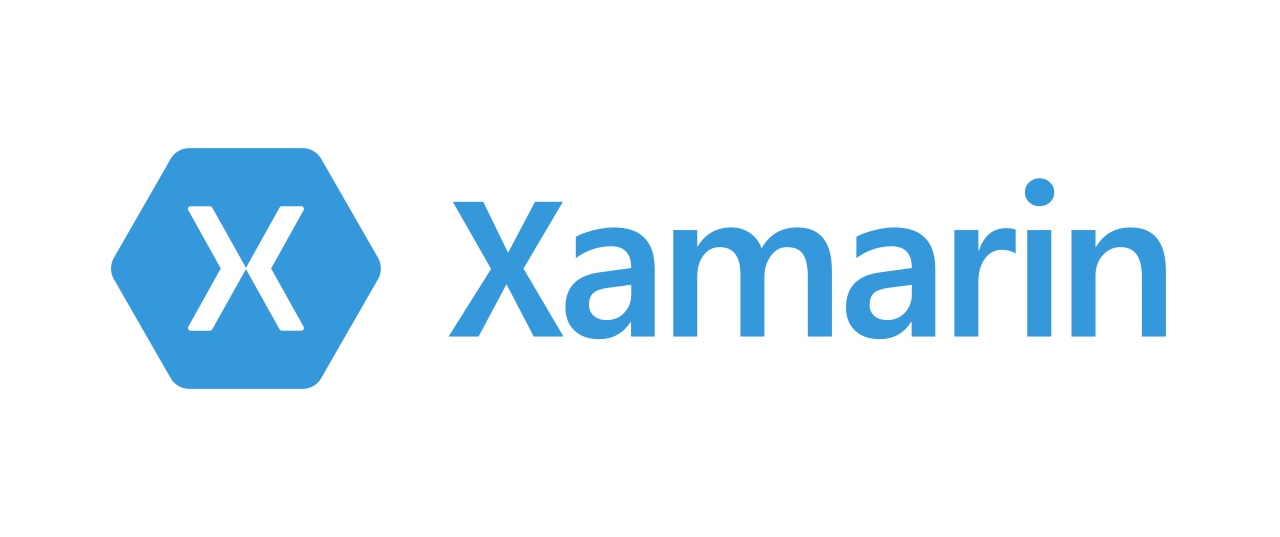
Xamarin quickly rose to fame by allowing developers to write code once and deploy it on both iOS and Android platforms. But like all good App Development Platforms, its reign is coming to an end.
Latest version of Xamarin
Xamarin.Forms 5.0, the latest version released on August 10, 2023, marked the peak of this framework’s capabilities.
Features of Xamarin.Forms 5.0
It brought in some impressive features, like robust cross-platform support and seamless integration with Visual Studio. This made it one of the best mobile app development platforms for those who wanted to hit multiple targets with a single shot.
Ideal Use Cases for Xamarin
Xamarin is still a solid choice for certain scenarios. It’s ideal for developers who need to deploy apps quickly across multiple platforms without compromising on performance. Xamarin allows you to maintain a single codebase, saving both time and money.
Pros and Cons of Xamarin
Pros? Well, Xamarin is a powerhouse in App Development Platforms with excellent Visual Studio integration and a strong community. It’s also great for cross-platform development, especially if you’re already embedded in the Microsoft ecosystem.
But there are cons too. With the end of support on the horizon, it’s becoming a less viable option for long-term projects. Plus, some developers have noted that performance can lag behind native apps. So, if you’re looking for the absolute best performance, you might want to explore other best mobile app development platforms.
Online Courses and Tutorials for Xamarin.Forms 5.0
if you’re still keen to learn about Xamarin.Forms 5.0—maybe for maintenance work or just to understand its nuances—you’re in luck. The official Xamarin.Forms samples are also available for you to get started.
There are plenty of online courses and tutorials out there too. Pluralsight offers a fantastic course on Xamarin.Forms 5.0 that can get you up to speed in no time. Check it out here.
Ionic

Source
When I first heard about Ionic, I thought it was just another framework in the vast sea of app development platforms. However, with its hybrid app development capabilities, Ionic offers the best of both worlds.
Latest version of Ionic
Fast forward to today, and we’re already on Ionic 8—specifically, version 8.2.7, released just a few days ago on August 13, 2024. If you want to geek out over the latest updates, you can check out the release notes.
Key Features of Ionic 8
So, what makes Ionic 8 so special? Let me break it down for you:
Hybrid App Development Capabilities: Creating a single app that works seamlessly on multiple platforms—iOS, Android, and even the web.
Adaptive Design: With Ionic, your app will look and feel native, no matter the platform. It’s as if your app is a chameleon, effortlessly blending in with its surroundings.
Performance Boosts: Version 8 brings under-the-hood improvements that make your apps run faster and smoother.
Capacitor: This isn’t just a component; it’s a revolution within Ionic. Capacitor makes it much easier to build and manage native plugins.
Ideal Use Cases for Ionic 8
If you’re developing an app that needs to work across multiple platforms, leveraging a versatile app development platform like Ionic should be at the top of your list. App development platforms such as Ionic are especially beneficial for startups looking to release an MVP (Minimum Viable Product) quickly and on a budget.
With Ionic, you can create a single codebase that works seamlessly on both iOS and Android, eliminating the need to build separate apps for each platform, which in turn saves you valuable time and money.
Or, let’s say you’re an enterprise looking to deploy an internal enterprise app for your employees. With Ionic, you can ensure that the app is available on all devices, whether they’re using a company-issued iPhone, an Android tablet, or even a desktop browser.
Basically, if you need to develop once and deploy everywhere, Ionic is one of the best App Development Platforms to go to.
Pros
- One codebase, multiple platforms. Need I say more? It’s like the one-size-fits-all hat that actually fits.
- Develop once, deploy everywhere. Your wallet will thank you.
- With a vast community of developers and plenty of plugins, you’re never alone when developing with Ionic. It’s like joining a club where everyone is more than happy to help.
Cons
- While Ionic 8 has made great strides, hybrid apps can still lag behind native ones in terms of raw performance. It’s like comparing a hybrid car to a gas-guzzling sports car—efficient but not always the fastest.
- Some deep native functionalities might require you to dive into native code or use plugins, which can add complexity. It’s like finding out that your all-in-one remote control doesn’t work with your new smart TV.
But hey, App Development Platforms have trade-offs. The key is knowing if those trade-offs work for you.
Online Courses and Tutorials for Ionic 8
If you’re thinking, “Wow, Ionic sounds awesome, but where do I start?”—you’re in luck. There are courses and certifications available on Class Central to help you master Ionic. Or, if you’re more of a hands-on learner like me, why not build your first app? Check out Ionic’s official tutorial to start. Trust me, there’s no better way to learn than by doing.
React Native

If you’ve been keeping an eye on the best App Development Platforms, you’ve probably noticed this name popping up everywhere. React Native has been making waves, and for good reason.
Developed by Facebook, it allows you to build mobile apps using JavaScript and React. The language known for its quirks and surprises has found a new home in the world of app development.
Latest version of React Native
React Native has quickly become one of the best mobile app development platforms. With its latest version, React Native 0.75.2, released recently, it’s clearer than ever why developers are flocking to it. Curious about what’s new? Let me break it down for you.
Key Features of React Native 0.75.2
- Yoga 3.1 and Layout Improvements: Yoga, React Native’s layout engine, brings significant enhancements in this version, making your app layouts more flexible and efficient, further solidifying its position among top App Development Platforms.
- Percentage Values in Gaps and Translation: This update allows you to use percentage values for gaps and translations. It’s like making it more adaptable to different screen sizes.
- New Architecture Stabilization: The architecture improvements are akin to upgrading your app’s engine for smoother performance. React Native’s new architecture makes the app run faster and more reliably.
- Accessing jsi::Runtime in TurboModules: This is a fancy way of saying you can now access a more efficient runtime for better performance.
- Using Frameworks: The update includes moving templates to ‘react-native-community/template’. This means you can start your projects with better-organized tools.
- Auto-linking Performance Improvements: Auto-linking now works even better. This makes it easier to integrate third-party libraries, saving you time and headaches.
For more details, check out the full release notes.
Ideal Use Cases for React Native
React Native truly shines in scenarios where you need to develop apps for both iOS and Android without duplicating effort. It allows you to create a cross-platform app with a single codebase, saving you time and money.
It’s also great for teams already familiar with JavaScript and React. If your team has a strong grip on JavaScript, You’ll be up and running in no time.
Pros and Cons of React Native
Pros: React Native is a top choice among App Development Platforms because it leverages JavaScript, making it accessible to a broad range of developers. It’s also highly performant, thanks to the optimizations in the new version. Plus, with its vibrant community and extensive library support, you’re never really on your own.
Cons: On the flip side, React Native can sometimes fall short of truly native performance. While it’s great for most applications, highly complex animations or interactions might not be as smooth as you’d get with fully native code.
Online Courses and Tutorials for React Native
If you’re itching to get started with React Native or just want to brush up on your skills, you’re in luck. There are some fantastic tutorials available. You can explore the official React Native documentation for a deep dive into how to make the most of this powerful framework.
Flutter

Since its debut, Flutter has rapidly gained traction in the world of mobile app development platforms. Why? Because it’s fast, flexible, and powerful.
Latest version of Flutter
The release of Flutter 3.7 on January 25, 2023, was a game-changer. Google unveiled some cool features that make this framework a top choice for developers. You can check out the full details of the release here.
Key Features of Flutter
Here’s what makes Flutter a standout in the app development platforms:
- Menu Bars and Cascading Menus: Easy to implement and customize.
- Custom Context Menus: Tailor the right-click experience to your needs.
- Global Selection Improvements: Better text selection tools.
- New Cupertino Components: The CupertinoListSection and CupertinoListTile bring iOS-style widgets to your Flutter app. They are perfect for those who want a native feel without the native code.
- Text Magnifier: This feature helps users with visual impairments by magnifying text. It is a small but mighty addition that makes a big difference.
Ideal Use Cases for Flutter
So, where does Flutter excel? It’s perfect for:
- High-Performance Apps: If your app demands high performance and smooth animations, Flutter’s native compilation gives you the speed you need. Among various app development platforms, Flutter stands out in terms of speed and responsiveness.
- Beautiful UIs: Flutter’s rich set of widgets and customizable components makes it ideal for creating visually appealing apps. If you’re aiming for a standout design, Flutter is your canvas.
Online Courses and Tutorials for Flutter
For more in-depth tutorials, check out this YouTube guide. It’s a fantastic resource to get you up to speed with Flutter’s capabilities.
NativeScript

Let’s explore NativeScript, a gem in the world of app development platforms. If you’re a JavaScript aficionado like me, NativeScript will be a breath of fresh air. Imagine developing native mobile apps using your favorite web technologies: JavaScript, Angular, Vue.js, and TypeScript.
NativeScript has carved a niche for itself by allowing developers to use JavaScript to create truly native apps. And when I say “truly native,” I mean it. We’re talking about apps that directly tap into the native APIs of iOS and Android.
Latest Version of Native Script
With its latest version, NativeScript 8.8.1, the platform has become even more powerful and versatile. Check out the latest updates.
Key Features of NativeScript 8.8.1
- Integration with Angular, Vue.js, and TypeScript: If you’re already familiar with these frameworks, you’ll be right at home with NativeScript
- CSS Media Query Support: You can now use CSS media queries to tailor your app’s appearance for different devices.
- Additional CSS Level 4 Support: More CSS means more customization.
- SF Symbols with Effects & Custom Symbol Effects: If you’re developing for iOS, SF Symbols are a must. NativeScript now lets you add custom effects to these symbols.
Curious about these features? Dive deeper here.
Ideal Use cases for NativeScript
It’s perfect for scenarios where you want to build a high-performance, native app but don’t want to abandon your JavaScript skills. Let’s say you’re a web developer tasked with creating a mobile app. Instead of learning a whole new language, you can leverage your existing knowledge.
Instead of learning a whole new language, you can leverage your existing knowledge. NativeScript is one of the leading app development platforms, and it is ideal for teams looking to maintain a single codebase for both web and mobile applications. It’s efficient, cost-effective, and just plain smart.
NativeScript is also ideal for teams looking to maintain a single codebase for both web and mobile applications. It’s efficient, cost-effective, and just plain smart.
The Pros and Cons of NativeScript
Pros: NativeScript’s biggest strength is its ability to deliver native performance with JavaScript. You’re not just creating an app; you’re crafting a high-quality native experience. The integration with popular frameworks like Angular and Vue.js makes it accessible and versatile.
And let’s not forget the powerful CSS support, which gives you the flexibility to make your app look stunning on any device. Compared to other App Development Platforms, NativeScript offers a unique balance of performance and flexibility.
Cons: On the flip side, NativeScript can have a steeper learning curve if you’re not familiar with native development concepts. It’s a bit like learning to drive a stick shift after years of using an automatic—challenging at first but rewarding once you get the hang of it.
Online Courses and Tutorials for NativeScript
If NativeScript sounds like your cup of tea, there are plenty of resources to help you get started. Whether you’re new to the platform or looking to sharpen your skills, you can find comprehensive tutorials and courses online. Check out this tutorial or head over to Udemy for more in-depth courses.
Android Studio

Source
Now, let’s switch gears and talk about Android Studio. If you’re developing apps for Android, this is the go-to app development platform. Created by Google, Android Studio is packed with features that make building Android apps a breeze. Android Studio isn’t just an IDE; it’s a full-fledged development environment that’s tailored specifically for Android.
Whether you’re a seasoned developer or just starting out, Android Studio has everything you need to create stunning, high-performance apps. It stands out among the top app development platforms available today.
Latest Version of Android Studio
With the latest update, Android Studio Ladybug | 2024.2.1 Canary 7, the IDE has become even more robust and user-friendly.
Features of Android Studio Ladybug | 2024.2.1 Canary 7
Google’s been hard at work ironing out the kinks and adding new features. Here’s a quick rundown:
- Android Gradle Plugin 8.7.0-alpha07: Now with support for API 35, which is about to ship. It’s like getting your hands on the latest gadget before anyone else.
- Network Inspector: This update fixes the Brotli compression issue, which means your network debugging just got a lot smoother.
- Translations Editor: The string order issue has been fixed, so your translations will be as smooth as silk.
Android Studio is a powerhouse in the world of best mobile app development platforms. For a detailed list of fixes, head over to the Android Studio blog.
Ideal Use Cases
It’s especially useful when you need to dive deep into Android App Development. Whether you’re building a simple app or a complex, multi-screen experience, Android Studio’s tools make it easy to get things done.
Online Courses and Tutorials for Android Studio
For a comprehensive introduction, check out the Learn Android Application Development course on Udemy. It’s perfect for beginners and covers everything you need to start building Android apps.
For more structured, in-depth training, explore the Android Developer Tutorials by Google. These official courses provide a deep dive into various aspects of Android development, from beginner to advanced levels.
Ext JS
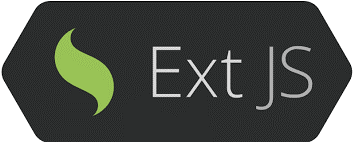
Originally, Sencha Touch was a separate entity focusing on mobile apps, but it has since been merged into Ext JS, making it a powerhouse among App Development Platforms for developing apps across multiple platforms. Ext JS, the evolved version, is particularly known for its versatility and performance, especially when creating large-scale applications.
Latest version of Ext JS
It’s built to cater to the needs of enterprise apps, meaning it’s designed to handle lots of data and users with grace. The last version of Sencha Touch was 2.4.2, but now, with Ext JS, you can expect much more.
Key Features of Ext JS
- High-performance UI components: Rich and customizable components for various app elements.
- MVC/MVVM architecture: Promotes organized and maintainable code structure.
- Flexible layout options: Supports various layout configurations for different app types.
- Sencha Architect: A visual development tool for creating apps without extensive coding.
- Sencha Cmd: Automates tasks like building, testing, and deploying apps.
- Cross-browser compatibility: Ensures apps work seamlessly across different browsers.
- IDE plugins: Provides integrations with popular development environments.
- Theming capabilities: Allows for easy customization of app appearance.
Ideal Use Cases
So, where does Ext JS truly shine? In enterprise environments, hands down. If you’re building an app that needs to juggle large datasets, perform under heavy user loads, and require complex UI components, Ext JS is your best friend. For example, I’ve seen it used in financial services, healthcare apps, and even some government platforms. It’s like the superhero of app development platforms—strong, reliable, and always up for a challenge.
Pros and Cons
Now, let’s talk pros and cons. The pros? Ext JS offers unmatched performance and a rich set of features that make it ideal for enterprise apps. It’s also great for app development on multiple platforms using App Development Platforms. However, it does come with a steep learning curve, and some developers find the licensing costs a bit high. But if you’re looking for quality and reliability, it’s worth every penny.
Online Courses and Tutorials for Ext JS
If you’re ready to dive into Ext JS, there are some excellent resources out there. Start with this step-by-step guide to an Ext JS tutorial for beginners. Once you’re more comfortable, check out the free Ext JS self-paced training. Trust me, these resources will help you become an Ext JS pro in no time.
Xcode
Switching gears to the world of Apple, let’s talk Xcode. If you’re an iOS or macOS developer, Xcode is your bread and butter. It’s the IDE that Apple developers swear by, and for good reason.
Latest Version of Xcode
The latest version, Xcode 16.0 Beta 3, released on July 8, 2024, continues to push the boundaries of what you can do with Apple’s ecosystem. It’s like having an entire toolbox in one app, with tools for interface design, coding, debugging, and even testing.
Key Features
One of the standout features of Xcode, one of the most notable App Development Platforms, is its Interface Builder. This tool allows you to design your app’s UI visually, which is a huge time-saver. Then there’s Swift support—Xcode is designed from the ground up to work seamlessly with Swift, Apple’s programming language.
Xcode 16 has also introduced some exciting improvements in Previews. Imagine being able to see how your UI will look and behave in real time as you code. The new Previewable macro is just one example of how Apple continues to make developers’ lives easier. You can check out the full list of new features to get all the juicy details.
Ideal Use Cases
Xcode is a no-brainer for developing iOS, iPadOS, watchOS, and macOS apps. It’s the gold standard among App Development Platforms for Apple development, making it perfect for projects where Apple’s ecosystem is your playground. Whether you’re building the next big social media app or a tool for productivity, Xcode’s features will support you every step of the way.
Pros and Cons
Let’s weigh the pros and cons. The pros? Xcode offers unparalleled integration with Apple’s hardware and software, a rich set of tools for UI design, and excellent support for Swift. The cons? It’s only available on macOS, which means Windows users are out of luck unless they use a workaround. Also, it can be resource-intensive, so you’ll need a robust machine to run it smoothly.
Online Courses and Tutorials for Xcode
Want to master Xcode? There are plenty of resources to help you out. Start with some courses on Udemy for a structured learning path. Apple also offers fantastic official tutorials that dive deep into the latest features. These are a must if you want to stay ahead of the curve.
Appery.io
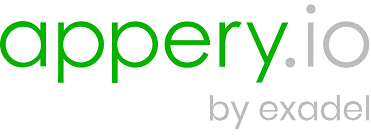
Appery.io is a cloud-based, no-code app development platform that’s designed to make your life easier. If you’re someone who wants to develop apps quickly without getting bogged down by coding complexities, this is the tool for you.
Latest version of Appery.io
What’s more, they’ve just announced support for Android 14, so you’re always on the cutting edge of technology. Check out the exciting announcement to stay updated.
Pricing Plans
Now, let’s talk about money. Appery.io offers surprisingly affordable pricing plans for App Development Platforms. Whether you’re a beginner or need something more robust, there’s a plan for you:
- Beginners: For just $25 per month, you get one developer seat, two apps, and 50K platform API calls per month.
- Pro: Their most popular plan costs $70 per month (annually) or $99 if you pay monthly.
- Team: If you’re part of a bigger crew, the Team plan at $135 per month (annually) or $200 monthly is ideal.
I know, right? Who would have thought building apps could be this affordable?
Key Features of Appery.io
So, what makes Appery.io stand out? For starters, its drag-and-drop interface is a game-changer. It allows you to create UI elements and functionality without writing a single line of code. You can integrate a cloud database effortlessly, meaning your app can store and retrieve data in real time. It’s like playing with digital Lego blocks—just stack, snap, and your app is ready!
Ideal Use Cases
Now, let’s say you’ve got a fantastic idea for a prototype, or you need to whip up a small to medium-sized app quickly. Appery.io is perfect for these scenarios. I’ve seen people use it to create everything from simple task management apps to more complex business tools—all in a fraction of the time it would take using traditional coding methods. Appery.io stands out among various App Development Platforms for its ease of use and efficiency.
Pros and Cons of Appery.io
On the plus side, it’s incredibly user-friendly and fast. You don’t need any coding experience to get started, making it one of the best app development platforms out there for beginners and small businesses. However, if you’re building a super complex app with custom functionalities, you might find the no-code environment limiting.
Online Courses and Tutorials for Appery.io
I recommend diving into their quickstart tutorials. They’ll walk you through the basics and have you building your first app in no time. Trust me, once you get the hang of it, you’ll wonder how you ever lived without it.
Firebase
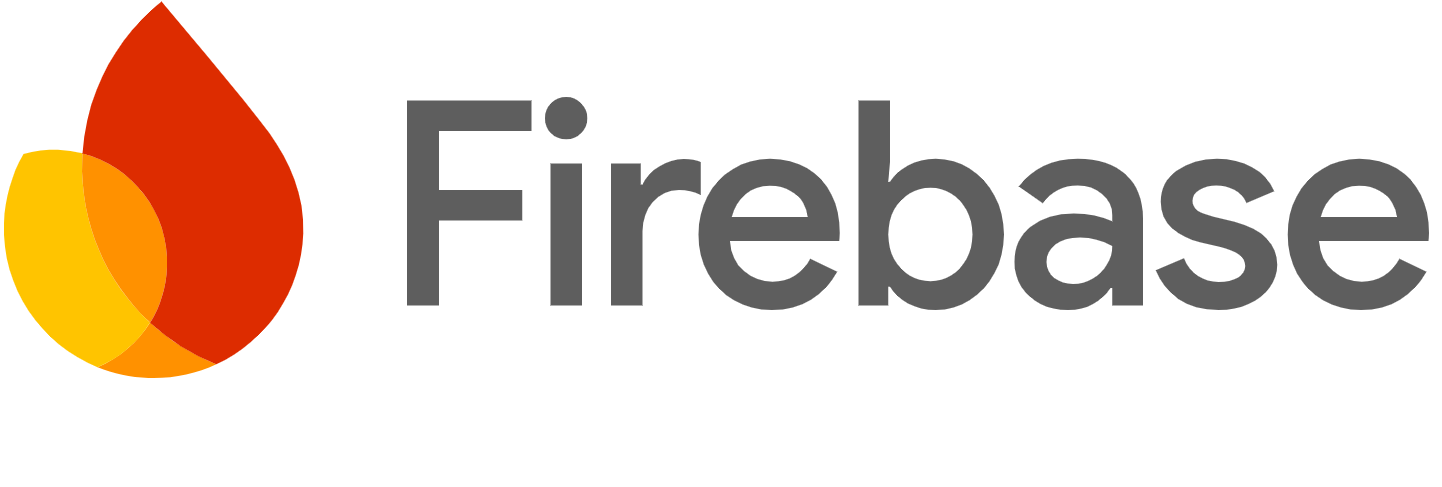
Firebase is Google’s all-in-one solution for mobile and web app development. It’s like having a whole toolkit at your disposal, from real-time databases to analytics, cloud messaging, and more.
Latest version of Firebase
The latest Firebase CLI, version 13.9.0, is now available, packed with new features and improvements. If you’re someone who likes to stay ahead of the curve, check out the release notes to see what’s new.
Key Features of Firebase
Firebase’s real-time database is probably its most famous feature. It allows you to store and sync data across all your users in real-time, making it perfect for apps that need to be up-to-the-minute accurate. Then there’s analytics, which gives you deep insights into how your users interact with your app. These features make Firebase a top choice among various app development platforms.
Cloud messaging is another standout feature. It lets you send notifications to your users, keeping them engaged and coming back for more. The release notes are a great resource for staying updated on Firebase CLI.
Ideal Use Cases
So, when is Firebase the best choice? If you’re building an app that requires real-time updates—think chat apps, collaborative tools, or anything where users need to see data as it changes—Firebase is your best friend. It’s also great for apps that need to scale quickly and efficiently, thanks to Google’s cloud infrastructure.
Pros and Cons of Firebase
The pros? It’s incredibly powerful and easy to integrate with other Google services. It’s also a solid choice for low-code app development platforms, offering extensive functionality without requiring you to build everything from scratch. On the flip side, it can get a bit pricey as your app scales, and some developers feel it locks you into Google’s ecosystem more than they’d like.
Online Courses and Tutorials for Firebase
There’s no shortage of resources to help you on your journey. The Firebase community page is a treasure trove of tutorials, guides, and courses. And if you prefer to learn by doing, the Firebase guides are an excellent way to get hands-on experience.
Best No-Code and Low-Code App Development Platforms
When I first heard about no-code and low-code platforms, I was skeptical. How could something so simple be effective? But as I explored, I realized they’re game-changers—especially for startups and non-tech-savvy users.
Why Choose No-Code/Low-Code?
Only some people have time to learn coding from scratch. Low-code platforms offer more flexibility, perfect for those who know a bit of code but don’t want to start from scratch.
Top No-Code Platforms
One standout is Appery.io. With its drag-and-drop interface, even newbies can build amazing apps without writing a single line of code. Other great no-code options include Bubble for web apps and Adalo for mobile apps—making app development accessible to everyone.
For those who know some coding, Firebase is one of the best app development platforms, offering tools from databases to hosting. Platforms like Mendix and OutSystems allow you to start with templates and add custom features, balancing ease of use with powerful customization options—perfect for enterprises aiming to get their apps to market quickly.
At TechnBrains, we are a leading mobile app development company helping businesses bring their app visions to life. Whether you’re exploring no-code, low-code, or App Development Platforms, our team can guide you every step of the way. Ready to start? Contact TechnBrains today and let’s build something amazing together!
FAQs
What are App Development Platforms?
App development platforms are tools and environments that streamline the process of creating software applications. They provide developers with a range of features, including code editors, debugging tools, and integration with various services.
Why Choose Low-Code/No-Code Platforms?
Low-code/no-code platforms are ideal for businesses seeking faster app development with minimal coding. They reduce costs by requiring smaller development teams and offer flexibility for customization.
Which Platform is Best for Cross-Platform Development?
The best cross-platform platform depends on your needs. Popular options include Flutter for high performance, React Native for JavaScript developers, and Xamarin for C# users.
How Do I Choose the Right Platform for My Business?
When selecting an app development platform, consider your team’s skills, project requirements, budget, scalability, and the platform’s community and support.


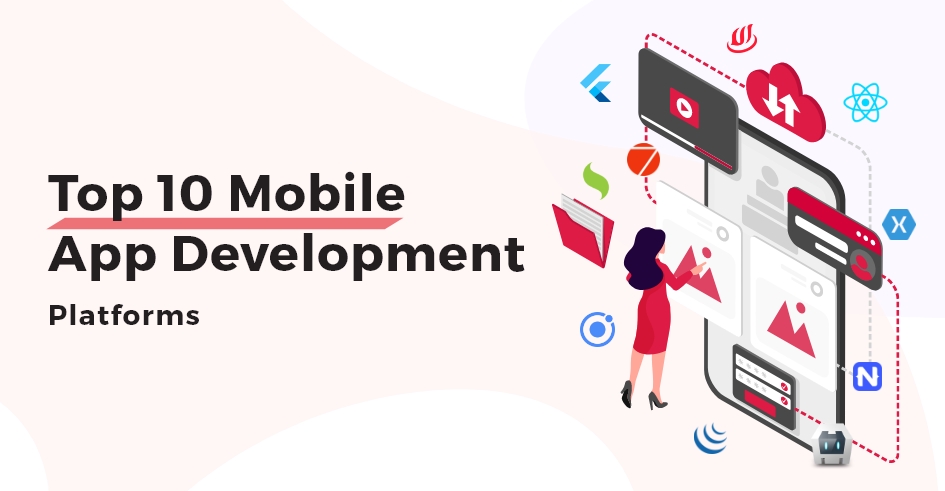
![app development platforms [updated 2024]](https://www.technbrains.com/blog/wp-content/uploads/2024/08/app-development-platforms-updated-2024.png)









